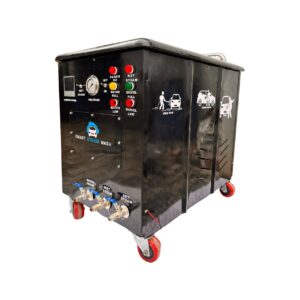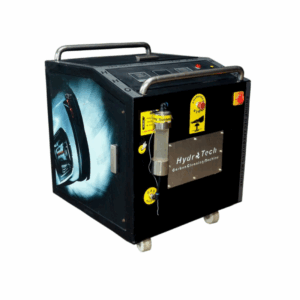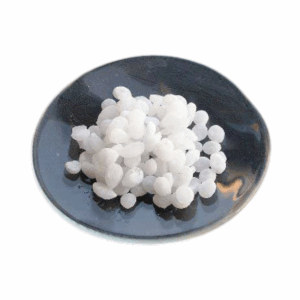


Automobile Carbon
Boosts Mileage by
Up to 60%
Advanced HHO technology that efficiently burns unburned fuel — saving fuel costs and supporting global sustainability.
Double Your
Engine’s Life
Extend engine longevity and reduce maintenance through cutting-edge hydrogen-powered decarbonisation systems.
Welcome to Hydrotech – India’s Leading Manufacturer of HHO Kits and Experts in Engine Carbon Cleaning Technology
Hydrotech Clean Energy Co is India’s leading manufacturer and supplier of advanced HHO (Water-to-Hydroxy) fuel saver kits and engine carbon cleaning machines. Backed by years of research and validated by respected institutions like NASA, ISRO, and top U.S. universities, our solutions are trusted across the automotive and industrial sectors for superior fuel efficiency and emission reduction.
We specialize in next-generation HHO kits for two-wheelers, three-wheelers, cars, trucks, and power generators, along with high-performance carbon cleaning machines for engines up to 10,000cc. Our proprietary systems:
- – Boost mileage by up to 60% by efficiently burning unburned fuel
- – Remove carbon build-up and prevent future engine deposits
- – Enhance pick-up and engine responsiveness
- – Reduce maintenance costs by minimizing engine wear
- – Extend engine life with smoother, cleaner operation
- – Lower CO and NOx emissions by up to 80%, supporting a cleaner environment
Our portfolio includes:
HHO Fuel Saver Kits, Bike Mileage Boosters, Dry Cell HHO Kits, Car and Truck Decarbonization Systems, Hydrogen Generator Cells (7/11 Plates), Potassium Hydroxide Electrolyte Pellets, and HHO Carbon Cleaning Machines for vehicles and gensets.
Boosts mileage by up to 60% by burning unburned fuel efficiently.
Removes existing carbon deposits and prevents future build-up.
Improves vehicle pick-up and overall engine responsiveness.
Reduces maintenance costs by minimizing engine strain.
Prolongs engine life through cleaner and smoother operation.
Lowers harmful emissions like CO and NOx for a greener drive.
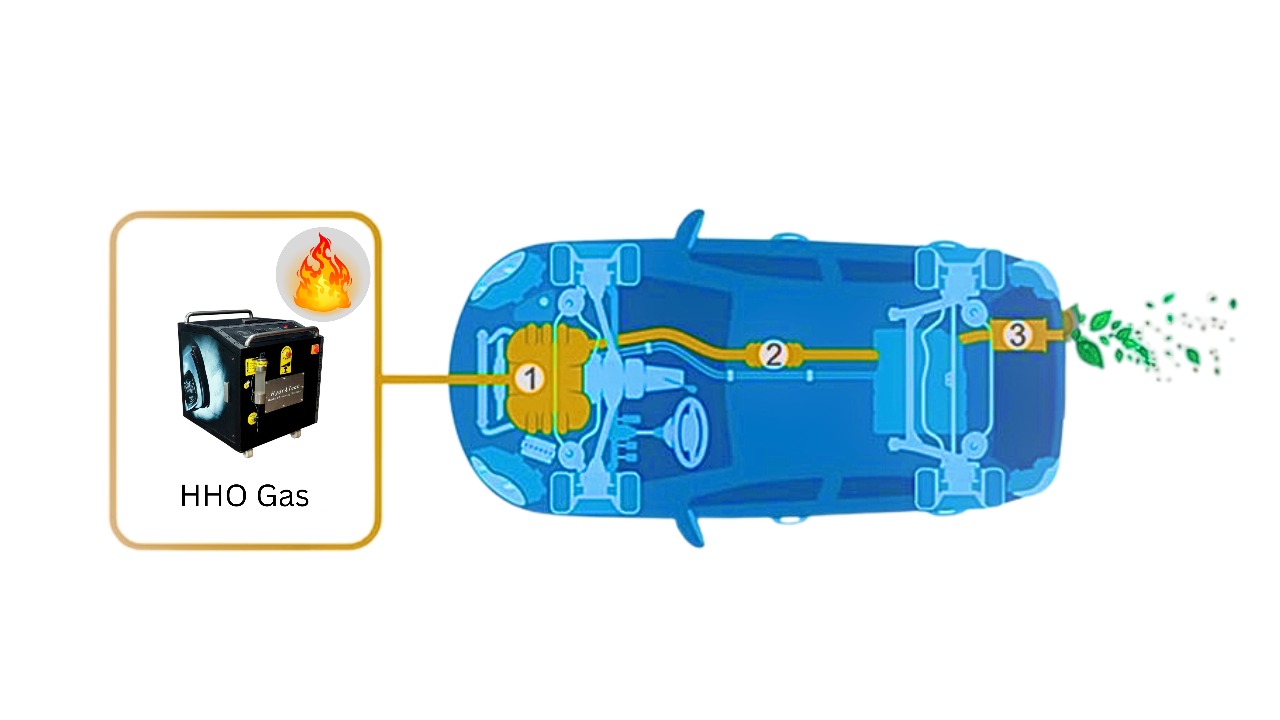
How HHO Kits Work
HHO Kits use the process of electrolysis to split water (H₂O) into hydrogen and oxygen molecules, creating HHO gas. This hydrogen-oxygen-rich gas is then introduced into the engine’s air intake system, mixing with the air-fuel mixture inside the combustion chamber. The result is a more complete and efficient combustion process, significantly improving the fuel’s burning efficiency and reducing carbon deposits.
With the use of HHO technology, not only do you reduce fuel consumption, but you also cut down on harmful emissions, ultimately improving engine performance, extending engine life, and contributing to a greener environment.
Key Advantages of HHO Gas
Enhanced Fuel Efficiency
Helps burn unburned fuel (carbon deposits), increasing mileage by up to 60% or more.
Removes Carbon Build-Up
Cleans existing engine carbon build-up and prevents future carbon accumulation.
Improved Vehicle Performance
Boosts engine pickup and overall responsiveness.
Lower Maintenance Costs
Reduces engine wear and maintenance needs.
Extended Engine Life
Promotes smoother engine operation and longer lifespan.
Reduced Emissions
Lowers harmful pollutants like CO and NOx, contributing to a cleaner environment.
Our Products
Customer Voices
Our Accreditations: Certifications & Licenses






Awards & Recognition







In The News

Entrepreneurs of India : Shubham Sharma, on establishing a successful system for a sustainable future for mankind: Hydrotech Clean Energy Co.
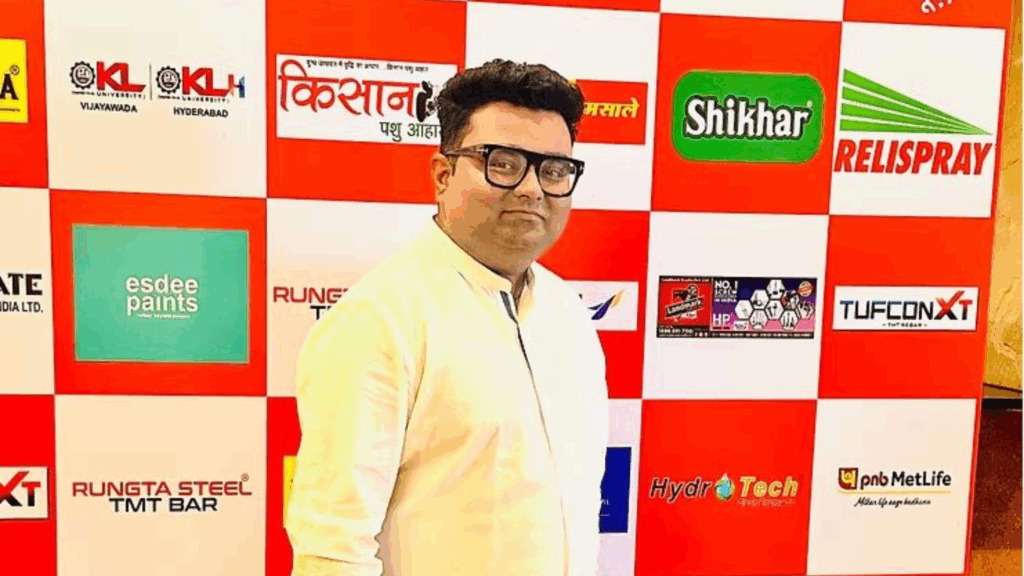
Founder Insights : Shubham Sharma leads the way to a sustainable future with Hydrotech Clean Energy Co.

Hydrotech Clean Energy Co. — Shubham Sharma’s visionary initiative leading the way toward a cleaner, more sustainable future.
Types of HHO Cell
Dry Cell: In a dry cell design, each plate representing the anode and cathode (electrodes) is sealed with a water-tight gasket or rubber O-ring. Electrical connections are made on the outer perimeter of each plate, keeping them clean and dry. The plates are bolted together along the perimeter edge using nylon washers to prevent short-circuiting between polarities.
The dry HHO cell design effectively creates a separate chamber for each cell. To visualize it, imagine a square plate with a circular cutout, approximately half to three-quarters the width of the square — this circle forms the closed chamber where electrolysis takes place. This design offers better durability and efficiency compared to the traditional wet cell models.
Advantage of Dry Cell Over Wet Cell in HHO Kits
Brands that trust Hydrotech

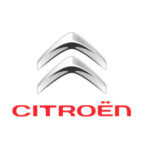






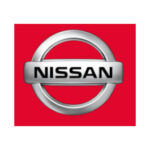



Frequently Asked Questions
HHO gas or “Brown’s Gas” or HYDROXY/ OXYHYDROGEN GAS is obtained by electrolysis of water. Water(H2O) molecule is broken into two molecules of hydrogen and one oxygen(HHO).
Our HHO on demand kit broke the water molecule and make HHO gas, which goes to bike engine with air and simply improves the combustion process of the fuel. It helps to burn your engine fuel completely. A typical engine wastes up to 80% of the fuel in the form of heat. With the use of a HHO the combustion is more complete, transferring more energy to motion and power instead of heat.
No, you don’t need any cylinder. Our HHO kit is very compact (1.5 inches x 5 inches) and easy to install on any bike. The HHO gas produced by the on-demand kit is not stored; it is used immediately as it is generated. Typical users of the on-demand HHO kit have reported fuel savings of 20% to 50%.
You can increase your mileage by up to 50%. For example, if you travel 500 km on a single tank of fuel, you can now travel 750 km, resulting in approximately 30% fuel savings.
Our HHO kit runs on very low current (0.25 to 0.90 amps only). The bike’s alternator produces approximately 4 amps of current when the engine starts, so the HHO kit operates on that current. You can also install our kit on bikes that don’t have a battery or have an old battery.
You only need to add 100 ml of water after 2,000 km of use.
The kit’s lifespan is a minimum of 75,000 km. It also comes with a one-year warranty.
This technology has been used for the last 20 years in many countries, but it is not yet widely popular in India. No problem! We’ve made our system very easy to install. Any bike mechanic can do it using our INSTALLATION MANUAL, which comes with every kit, and installation videos are also available.
The installation will take only 20 minutes, even if it’s your or the mechanic’s first time installing it.
With our HHO generators, you do not need a pulse modulator. They are optimized to be much more productive when fed directly with DC (DCV) from the vehicle. Wide-pulse modulation does not work efficiently with HHO generators like the “Dry cell” second-generation systems, which have been in use since 2008.
In winter, we use a concentrated electrolyte solution, so freezing isn’t an issue, even at temperatures as low as -28°C.
The operating temperature of the motor remains low. HHO gas burns very quickly, helping the engine serve as a catalyst for better combustion. The combustion chamber is designed to withstand high temperatures and cools well. Tests at the Institute of Internal Combustion have shown that the combustion temperature is lower when using Brown’s gas, compared to using petrol or diesel alone.
Yes, you can return the product within 7 days if it is unused, in its original packaging, and in good condition. Please include the purchase document.
We offer a full 2-year warranty for our hydrogen generator, ensuring proven quality.
There is no risk of explosion because HHO gas ignites only at temperatures above 570°C. The system is designed to be airtight and is protected from hot parts of the vehicle. In case of mechanical damage, the generator stops producing gas, and if it’s severely damaged, water simply drains out.
No, you don’t need to declare it because the system doesn’t modify the car. It is a separate system and is not subject to technical inspection for low-pressure devices according to EU regulations. However, you can check local regulations for clarification.
Yes, Brown’s gas is 100% oxygen, which allows for a more complete and faster combustion of the primary fuel. This results in improved engine efficiency.
It works with all internal combustion engines using petrol, diesel, LPG, and CNG.
No, the Brown’s gas generator does not cause any harm to the engine. It operates by converting water into gas that enters the engine through the intake manifold, and it is protected from backfire.
Car manufacturers aren’t interested in implementing hydrogen generators because it would make cars cheaper, rendering complex fuel injection systems and other innovations obsolete. Additionally, the fuel industry is too large for such technology to be widely adopted.
Every 500-700 km, you need to top up the system with around 300 ml of distilled water. Every 20,000 to 30,000 miles, or depending on use, you should flush the system and reload it with distilled water and electrolyte (Potassium hydroxide flakes).
The electrolyte used is Potassium Hydroxide (KOH), which is available in most chemical stores.
While the generator will work with other types of water (e.g., tap water, mineral water), it will lead to the deposition of minerals and impurities. This will form a clay-like substance on the generator plates, which reduces the production of HHO gas.
Absolutely not. If there’s an accident, the worst that will happen is that water and electrolyte will spill on the ground, and the engine oil may turn to soap.
The fuel cell is made from non-corrosive materials, and while it may need to be replaced after 4-5 years of use, the materials used are recyclable.
When you turn the key to the off position, the engine stops the production of Brown’s gas, and the gas that was already produced has been consumed.

